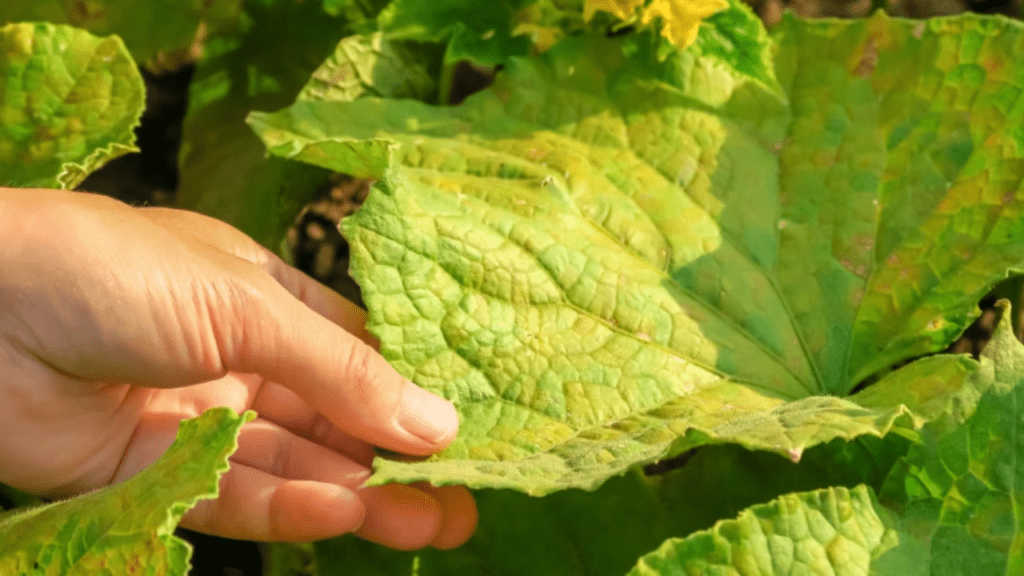
Why Are My Cucumber Plants Turning Yellow? Causes and Solutions
Cucumber plants are prized in gardens for their crisp fruit and vibrant green foliage. However, when gardeners notice their cucumber plants turning yellow, it can be a cause for concern. This article explores the common reasons behind cucumber plants turning yellow and provides effective solutions to help your plants thrive again.
Cucumber plants turning yellow is a common issue faced by gardeners. There are a few reasons why this may be happening. One common cause is overwatering, which can lead to root rot and yellowing leaves. Another reason could be nutrient deficiency, particularly nitrogen, which is essential for healthy plant growth. Pests, such as spider mites or aphids, can also cause yellowing of cucumber plants. To address these issues, it’s important to adjust your watering schedule, ensure your plants are receiving the proper nutrients, and take measures to control pests. Additionally, providing adequate sunlight and proper air circulation can help prevent yellowing of cucumber plants. By addressing these issues and implementing effective solutions, you can help your cucumber plants thrive and produce healthy, vibrant fruit.
Table of Contents
ToggleUnderstanding Cucumber Plants Turning Yellow
Symptoms and Signs
Describe how yellowing manifests in cucumber plants.
Yellowing in cucumber plants can manifest in a few different ways. The leaves of the plant may turn yellow, starting from the edges and then spreading throughout the entire leaf. In some cases, the leaves may also develop brown spots or patches. The yellowing may also extend to the stems and veins of the plant. Additionally, the overall growth and development of the plant may be stunted, and the fruit production may be reduced.
There are several reasons why yellowing may occur in cucumber plants. One common cause is overwatering, which can lead to root rot and eventually cause the leaves to turn yellow. Another reason could be nutrient deficiency, particularly nitrogen, which is essential for healthy plant growth. Inadequate sunlight and poor air circulation can also lead to yellowing in cucumber plants. Additionally, pests such as spider mites or aphids can cause damage to the leaves, resulting in yellowing.
To address these issues, it’s important to adjust your watering schedule to ensure that the plants are not being overwatered. Providing the proper nutrients, including nitrogen, through fertilization or soil amendments can also help prevent yellowing. Taking measures to control pests, such as using insecticidal soap or neem oil, can also help protect the plants from damage.
Ensuring that the plants receive adequate sunlight and proper air circulation can also help prevent yellowing. By addressing these issues and implementing effective solutions, you can help your cucumber plants turning yellow thrive and produce healthy, vibrant fruit.
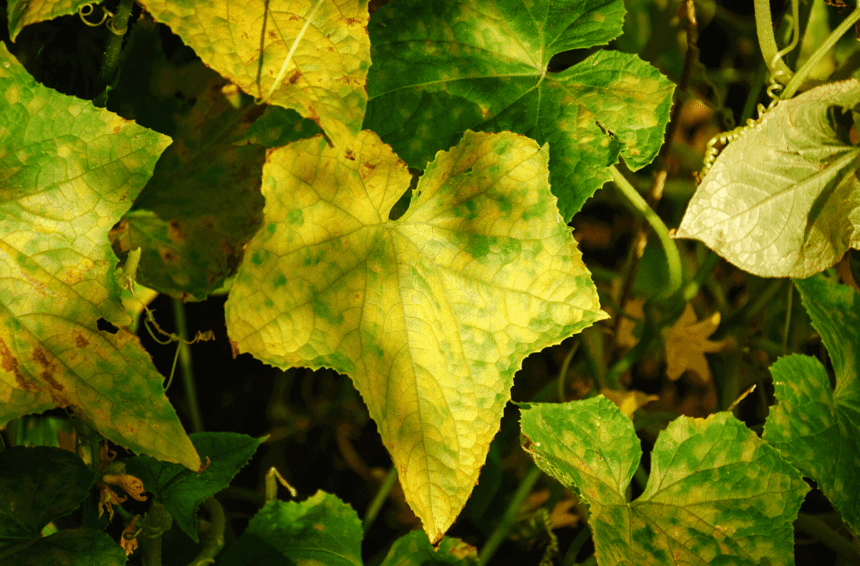
Visual cues and changes in leaf appearance.
When you notice changes in leaf appearance, such as yellowing, it’s important to take action to address the underlying issues. Yellowing in cucumber plants turning yellow can be caused by a variety of factors, including inadequate sunlight, poor air circulation, overwatering, nutrient deficiencies, and pest infestations. It’s important to closely monitor your plants and look for visual cues that may indicate these issues. Inadequate sunlight and poor air circulation can hinder the plant’s ability to photosynthesize and can lead to yellowing of the leaves. Adjusting the positioning of your plants or providing supplemental lighting can help address these issues. Overwatering can also lead to yellowing, so it’s important to adjust your watering schedule to ensure that the plants are not being watered too much. Providing the proper nutrients, including nitrogen, through fertilization or soil amendments, can also help prevent yellowing and promote healthy leaf growth. Additionally, it’s important to be vigilant about pest infestations, such as spider mites or aphids, which can cause damage to the leaves and result in yellowing. Using insecticidal soap or neem oil can help control these pests and protect the plants from damage. By addressing these issues and implementing effective solutions, you can help your cucumber plants turning yellow thrive and produce healthy, vibrant fruit.
Environmental Factors
Light Exposure
: Plants need adequate sunlight to thrive and grow. If your plants are not getting enough sunlight, it can lead to yellowing of the leaves. Consider adjusting the positioning of your plants to ensure they are getting the right amount of light. In some cases, providing supplemental lighting may be necessary to address this issue.
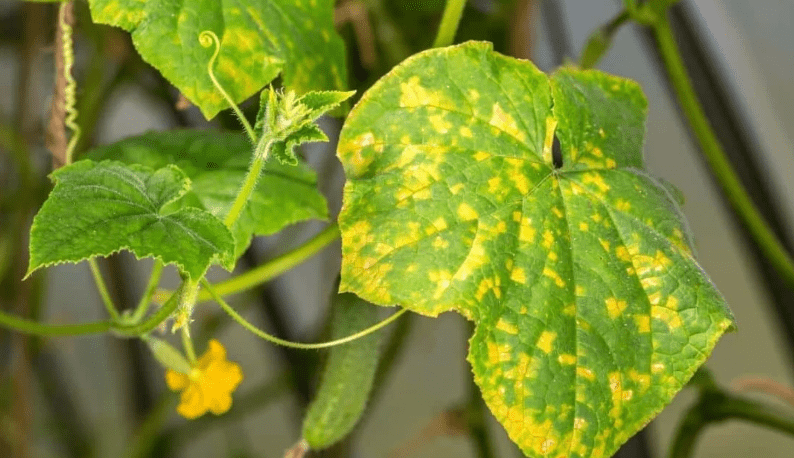
Air Circulation
Poor air circulation can also hinder a plant’s ability to photosynthesize and lead to yellowing of the leaves. Make sure to provide proper air circulation for your plants to ensure they are able to thrive.
Overwatering
Overwatering can lead to yellowing of the leaves as well. Adjust your watering schedule to ensure that the plants are not being watered too much. Proper watering is essential for the health of your plants.
Nutrient Deficiency
Providing the proper nutrients, including nitrogen, through fertilization or soil amendments, can help prevent yellowing of the leaves and promote healthy leaf growth. Make sure to provide your plants with the nutrients they need to thrive.
Pest Infestations
Be vigilant about pest infestations, such as spider mites or aphids, which can cause damage to the leaves and result in yellowing. Use insecticidal soap or neem oil to control these pests and protect your plants from damage.
By addressing these environmental factors and implementing effective solutions, you can help your plants thrive and produce healthy, vibrant leaves.
Temperature Stress
Temperature Stress can be a major factor in the yellowing of plant leaves. Plants can become stressed when exposed to extreme temperatures, either too cold or too hot. It’s important to monitor the temperature and adjust your watering schedule to ensure that the plants are not being watered too much. Proper watering is essential for the health of your plants. In addition to temperature stress, nutrient deficiency can also lead to yellowing leaves. Providing the proper nutrients, including nitrogen, through fertilization or soil amendments, can help prevent yellowing of the leaves and promote healthy leaf growth. It’s important to make sure to provide your plants with the nutrients they need to thrive. Pest infestations can also cause damage to plant leaves and result in yellowing. It’s important to be vigilant about pest infestations, such as spider mites or aphids, and use insecticidal soap or neem oil to control these pests and protect your plants from damage. By addressing these environmental factors and implementing effective solutions, you can help your plants thrive and produce healthy, vibrant leaves.
Nutrient Deficiencies
Nutrient Deficiencies can have a significant impact on the health and growth of your plants. Proper watering is essential for the health of your plants, as well as providing the proper nutrients through fertilization or soil amendments. Nutrient deficiencies, such as a lack of nitrogen, can lead to yellowing leaves and stunted growth. It’s important to monitor your plants for signs of nutrient deficiencies and take action to address them. In addition to nutrient deficiencies, pest infestations can also cause damage to plant leaves and result in yellowing. It’s important to be vigilant about pest infestations and use appropriate methods to control them. By addressing these environmental factors and implementing effective solutions, you can help your plants thrive and produce healthy, vibrant leaves.
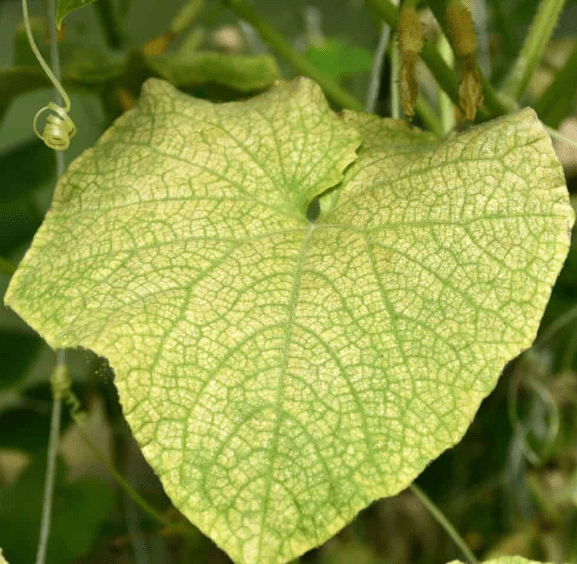
Nitrogen, Phosphorus, and Potassium
Nitrogen, Phosphorus, and Potassium are the three essential nutrients that plants need to thrive. Nitrogen is essential for leaf growth and overall plant health, phosphorus is important for root development and flower/fruit production, and potassium helps with overall plant health and disease resistance. Without these essential nutrients, plants can suffer from nutrient deficiencies which can lead to stunted growth, yellowing leaves, and poor fruit/flower production. It’s important for gardeners and farmers to monitor their plants for signs of nutrient deficiencies and to provide the necessary fertilizers or soil amendments to correct these deficiencies. By ensuring that your plants have the proper balance of these nutrients, you can help them to grow and thrive.
Micronutrients
Micronutrients are essential nutrients that plants need in smaller quantities but are still crucial for their growth and development. These include nutrients such as iron, copper, zinc, and manganese. Micronutrients play a vital role in various plant functions, including photosynthesis, enzyme activation, and overall plant health. Deficiencies in micronutrients can lead to stunted growth, leaf discoloration, and reduced resistance to diseases and pests. It’s important for gardeners and farmers to ensure that their plants have access to these micronutrients either through soil amendments or foliar sprays. By providing plants with a balanced mix of micronutrients, you can help them to thrive and produce healthy, vibrant leaves. Overall, maintaining a good balance of both macro and micronutrients is crucial for the health and success of your plants.
Watering and Soil Conditions
Overwatering.
Overwatering can have negative effects on plant health and growth. When plants are overwatered, the roots can become waterlogged and suffocate, leading to root rot and other issues. It’s important to water your plants appropriately based on their specific needs and the type of soil they are planted in. One way to prevent overwatering is to use a well-draining soil mix and to water plants at the base rather than from overhead. This can help to prevent water from pooling around the roots and causing damage. Additionally, you can monitor soil moisture levels by using a moisture meter or simply by feeling the soil with your finger to determine if it is dry enough to require watering. By being mindful of watering and soil conditions, you can help your plants to thrive and avoid the negative effects of overwatering.
Underwatering
Underwatering can also have negative effects on plant health and growth. When plants are underwatered, they can become stressed and wilt, leading to stunted growth and potential damage to the plant. It’s important to be mindful of the specific water needs of each plant and to water them accordingly. One way to prevent underwatering is to regularly check the soil moisture levels and water plants when the soil is dry to the touch. Additionally, you can consider using a self-watering system or setting up a watering schedule to ensure that your plants receive the appropriate amount of water. By being attentive to the water needs of your plants, you can help them to thrive and grow successfully.
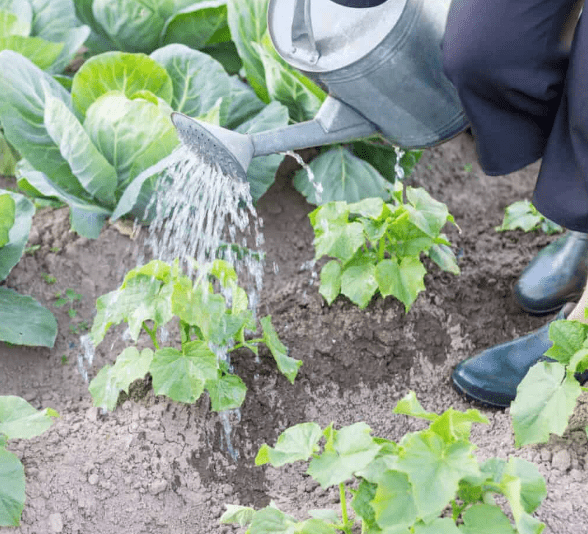
Pest and Disease Issues
Common Pests
Pests and diseases can have a detrimental effect on plant health and growth. Common pests include aphids, spider mites, and whiteflies, which can suck the sap from plants and cause damage. In addition, diseases such as powdery mildew and root rot can also negatively impact plant health. To prevent and manage these issues, it’s important to regularly inspect your plants for signs of pests or diseases and take appropriate measures to address them. This may include using organic pest control methods, such as introducing beneficial insects or using neem oil, and practicing good garden hygiene to minimize the risk of disease. By staying vigilant and proactive in managing pest and disease issues, you can help your plants to thrive and avoid the negative effects of these common problems.
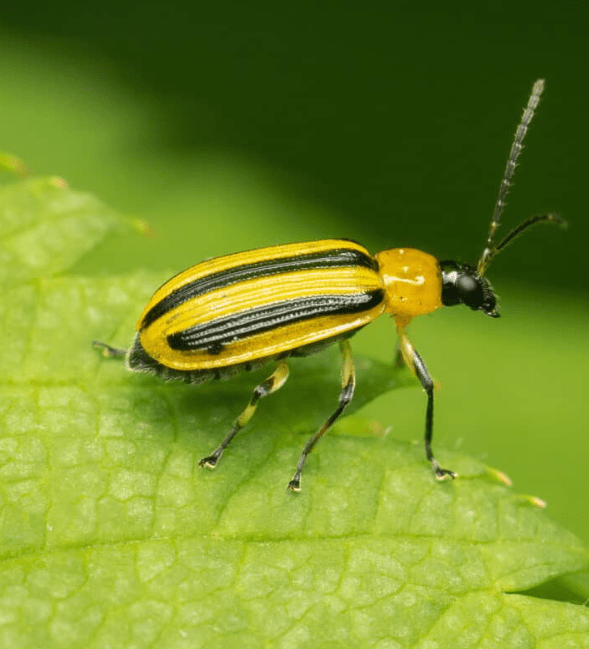
Diseases
Diseases can have a significant impact on the health and growth of your plants. Common diseases that can affect plants include powdery mildew, which can cause a white powdery substance to form on leaves, and root rot, which can lead to wilting and decay of the roots. It’s important to regularly inspect your plants for signs of disease and take prompt action to address any issues. This may involve removing infected plant parts, improving air circulation around the plants, and using fungicides or other treatments to control the spread of disease. Preventing the spread of disease is crucial for maintaining healthy plants, so it’s important to practice good garden hygiene and take proactive measures to prevent the onset of disease. By being proactive in managing pests and diseases, you can help your plants to thrive and grow successfully.
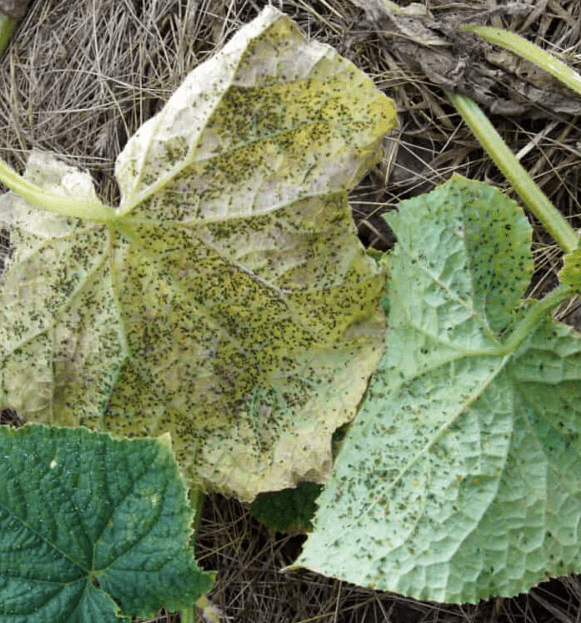
Soil Quality and pH Balance
Soil Composition
Soil composition is an important factor in the health and growth of plants. The composition of soil includes the combination of sand, silt, and clay, as well as organic matter and microorganisms. The pH balance of the soil also plays a crucial role in plant growth, as different plants thrive in different pH levels. It’s important to regularly test the soil in your garden to ensure that it has the right balance of nutrients and pH levels for the plants you are growing. Adding organic matter, such as compost, can help improve soil quality and provide essential nutrients for plant growth. By taking care of the composition and pH balance of the soil, you can create a healthy environment for your plants to thrive.
pH Levels
pH Levels are a measure of the acidity or alkalinity of the soil. The pH scale ranges from 0 to 14, with 7 being neutral. Most plants prefer a slightly acidic to neutral pH level, around 6.0 to 7.0. However, some plants, such as blueberries and azaleas, prefer a more acidic soil with a pH level below 6.0. On the other hand, some plants, like asparagus and lilacs, thrive in more alkaline soil with a pH level above 7.0. It’s important to test the pH level of your soil to ensure that it is suitable for the plants you want to grow. You can use a pH testing kit to measure the acidity or alkalinity of your soil and make adjustments as needed. Adding materials such as sulfur to lower the pH or lime to raise it can help to create the perfect pH balance for your plants. By paying attention to the pH levels of your soil, you can ensure that your plants have the optimal conditions for healthy growth and development.
Cultural Practices for Healthy Cucumber Plants
Crop Rotation
Crop Rotation is an important practice in agriculture that involves growing different crops in the same area in sequential seasons. This practice helps to maintain soil fertility, reduce soil erosion, and minimize the build-up of pests and diseases. When it comes to crop rotation, it’s important to consider the pH levels of the soil as different plants have different preferences. Most plants prefer a slightly acidic to neutral pH level, around 6.0 to 7.0. However, some plants, such as blueberries and azaleas, prefer a more acidic soil with a pH level below 6.0. On the other hand, some plants, like asparagus and lilacs, thrive in more alkaline soil with a pH level above 7.0. It’s important to test the pH level of your soil to ensure that it is suitable for the plants you want to grow. You can use a pH testing kit to measure the acidity or alkalinity of your soil and make adjustments as needed. Adding materials such as sulfur to lower the pH or lime to raise it can help to create the perfect pH balance for your plants. By paying attention to the pH levels of your soil, you can ensure that your plants have the optimal conditions for healthy growth and development. Overall, crop rotation and soil pH management are essential practices for maintaining healthy crops and maximizing yield.
Companion Planting.
Companion planting is a gardening technique where different types of plants are grown together to benefit each other in various ways. For example, some plants can help to repel pests that may damage neighboring plants, while others can provide shade or support for climbing plants. Additionally, certain plants can also help to improve soil fertility and nutrient availability for their companion plants. By strategically planting different types of plants together, gardeners can create a more balanced and sustainable ecosystem within their garden. For example, planting basil alongside tomatoes can help to improve the flavor of the tomatoes and deter pests, while planting marigolds near squash can help to repel harmful insects. Overall, companion planting is a natural and effective way to promote healthy growth and productivity in the garden.
Maintenance and Care Tips
Pruning and Thinning
Pruning and Thinning are essential practices for maintaining healthy and productive plants in the garden. Pruning involves removing dead or overgrown branches and stems from plants, which helps to improve air circulation and promote new growth. Thinning, on the other hand, involves selectively removing excess or overcrowded plant growth to reduce competition for resources and encourage stronger, healthier growth. Both practices can help to improve the overall health and productivity of your garden plants. When pruning and thinning, it’s important to use sharp, clean tools to make clean cuts and minimize the risk of disease transmission. Additionally, it’s important to prune and thin at the right time of year for each specific plant, as different plants have different growth patterns and pruning needs. By incorporating regular pruning and thinning into your garden maintenance routine, you can help to promote strong, healthy growth and maximize the productivity of your garden plants.
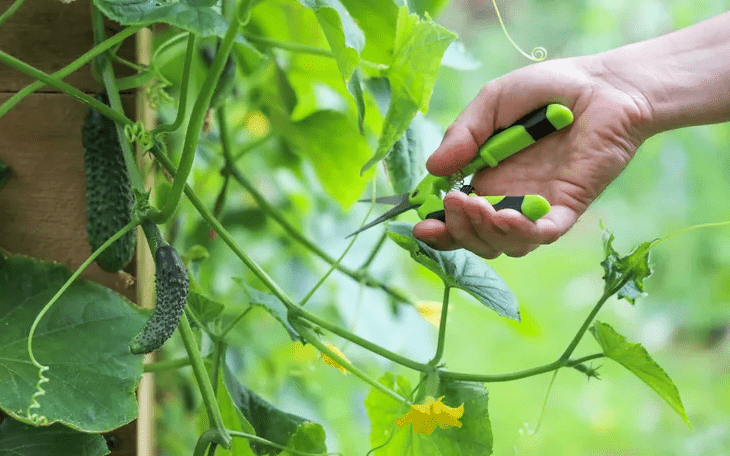
Mulching and Support
Mulching and support are essential practices for maintaining a healthy and thriving garden. Mulching, which involves covering the soil with a layer of organic material, helps to retain moisture, suppress weeds, and regulate soil temperature. It also adds organic matter to the soil as it breaks down, improving soil structure and fertility. By mulching around your plants, you can help to maintain a healthy and productive garden.
Support, on the other hand, involves providing physical support for plants that may be prone to bending or breaking under the weight of their fruits or flowers. This can be accomplished using stakes, trellises, or cages, depending on the type of plant. By providing proper support, you can help to prevent damage to your plants and improve air circulation, which can reduce the risk of disease.
When it comes to maintenance and care, it’s important to regularly prune and thin your plants. Pruning involves removing dead or overgrown branches and stems to improve air circulation and promote new growth. Thinning, on the other hand, involves selectively removing excess or overcrowded plant growth to reduce competition for resources and encourage stronger, healthier growth.
By incorporating these practices into your garden maintenance routine, you can help to promote strong, healthy growth and maximize the productivity of your garden plants. Remember to use sharp, clean tools for pruning and thinning, and to prune and thin at the right time of year for each specific plant. This will help to ensure the overall health and productivity of your garden.
Monitoring and Prevention Strategies
Regular Inspection
Regular Inspection is crucial for maintaining the health and vitality of your plants. By regularly inspecting your garden, you can identify any potential issues or concerns and take proactive measures to address them. Look for signs of disease, pest infestations, nutrient deficiencies, and other issues that may negatively impact the health of your plants. By catching these problems early, you can prevent them from spreading and causing further damage to your garden. In addition to regular inspections, it’s important to implement prevention strategies to protect your plants from potential threats. This may include using natural pest deterrents, maintaining proper soil fertility, and providing adequate irrigation and drainage. By staying vigilant and proactive in your garden maintenance, you can help to ensure the long-term health and success of your plants.
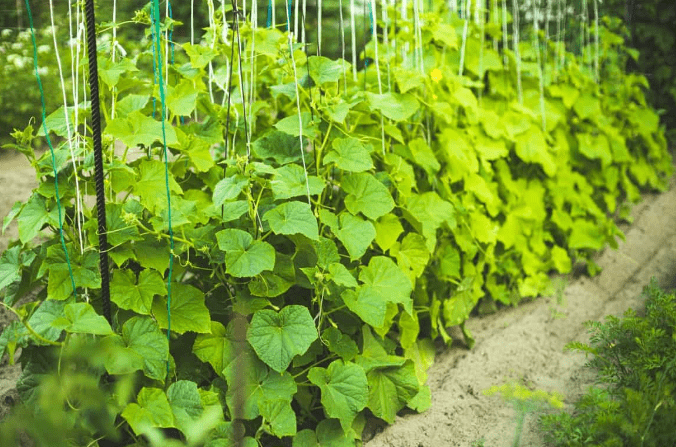
Preventive Measures
Preventive Measures are essential for maintaining the health and vitality of your garden. Regular inspection is crucial for identifying any potential issues or concerns and taking proactive measures to address them. Look for signs of disease, pest infestations, nutrient deficiencies, and other issues that may negatively impact the health of your plants. By catching these problems early, you can prevent them from spreading and causing further damage to your garden. In addition to regular inspections, it’s important to implement prevention strategies to protect your plants from potential threats. This may include using natural pest deterrents, maintaining proper soil fertility, and providing adequate irrigation and drainage. By staying vigilant and proactive in your garden maintenance, you can help to ensure the long-term health and success of your plants. Remember, prevention is key to maintaining a thriving and beautiful garden.
In conclusion, yellowing cucumber plants can be caused by a variety of factors including nutrient deficiencies, disease, and environmental stress. By identifying the root cause of the issue and implementing targeted solutions such as adjusting soil pH, providing proper irrigation, and using organic fertilizers, you can revive your garden and ensure healthy cucumber plants. It’s important to regularly monitor the health of your plants and take proactive measures to address any issues that arise. With the right care and attention, you can enjoy a thriving cucumber garden.
Frequently asked questions And Answer
Cucumber plants can turn yellow for a few reasons, including nutrient deficiencies, overwatering, or diseases such as cucumber mosaic virus.
To prevent yellowing, make sure to water your plants properly, provide the right nutrients through fertilization, and keep an eye out for any signs of disease.
Cucumber plants need a balanced supply of nitrogen, phosphorus, and potassium, as well as other micronutrients like magnesium and calcium.
Look for symptoms such as mottled or distorted leaves, stunted growth, and yellowing that spreads throughout the plant.
Yes, pests such as spider mites or aphids can cause yellowing of cucumber plants by sucking out their sap.
If your plants are already yellow, try to identify the cause and address it accordingly. This may involve adjusting your watering schedule, providing the right nutrients, or treating for pests or diseases.
It’s best to address the underlying issue causing the yellowing before attempting to harvest from affected plants.
Practice good garden hygiene, rotate your crops, and monitor your plants regularly to catch any issues early on.
